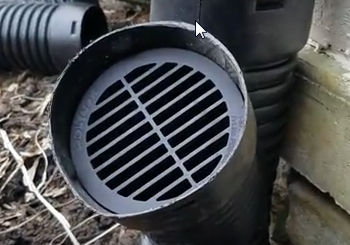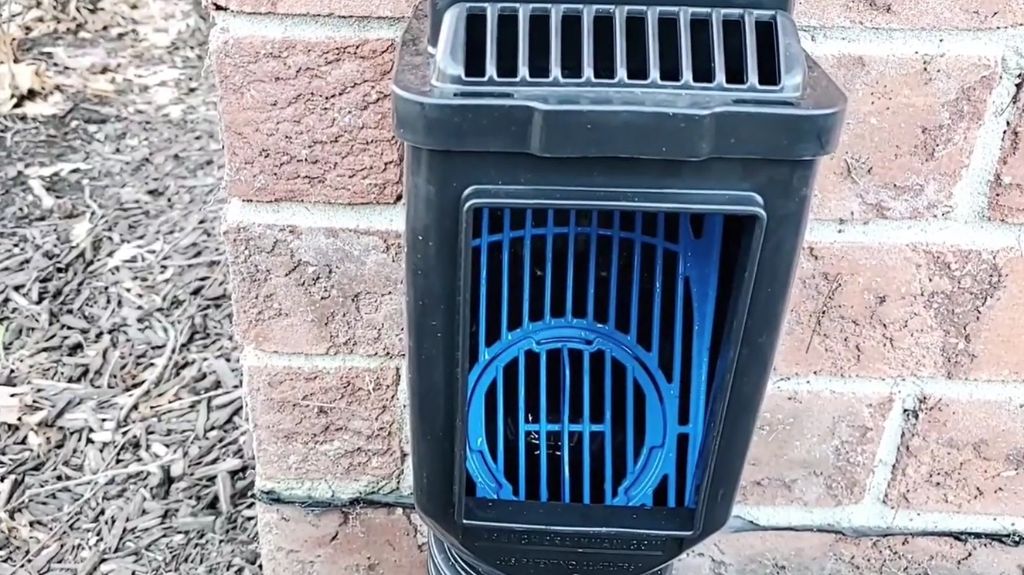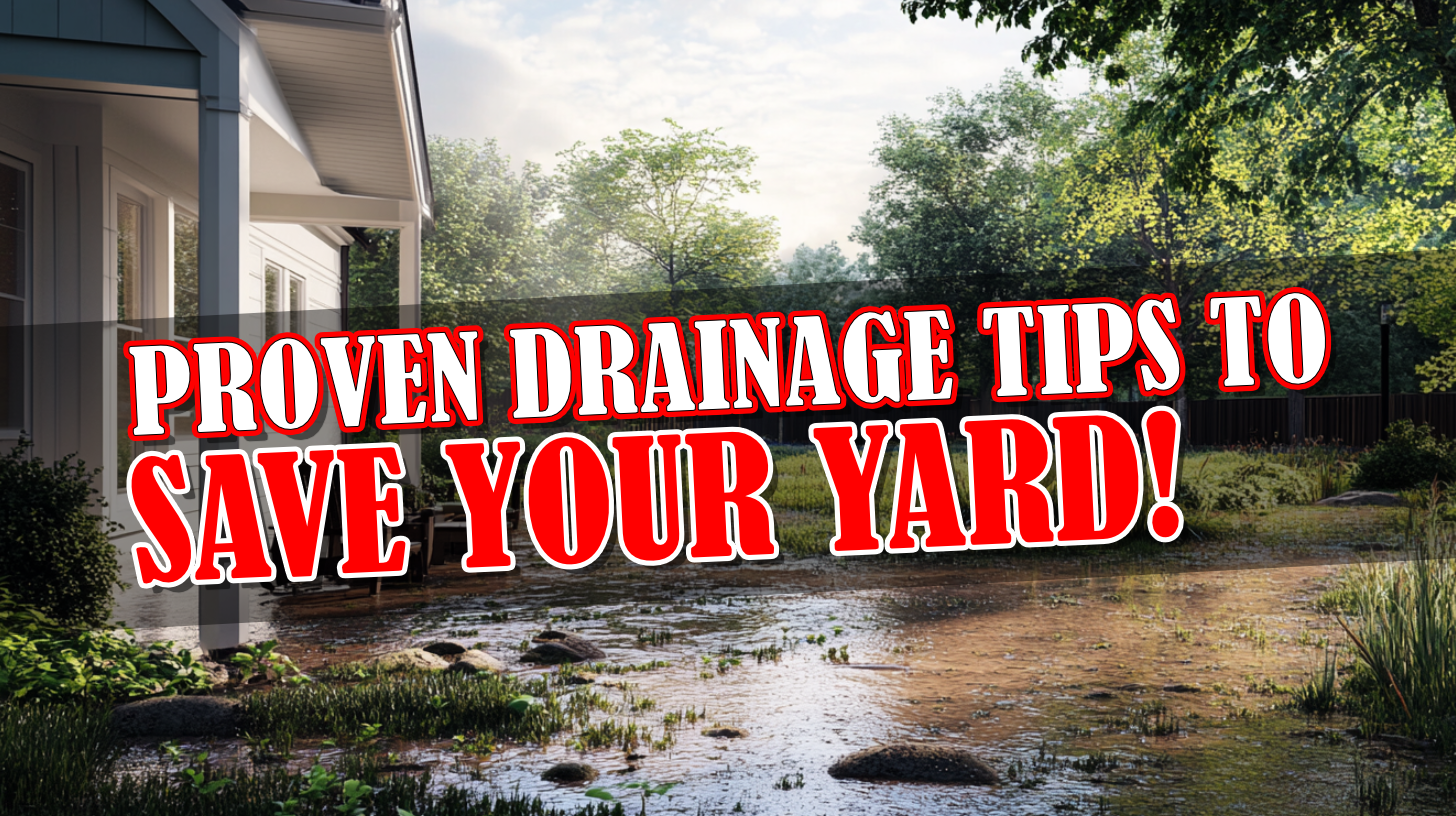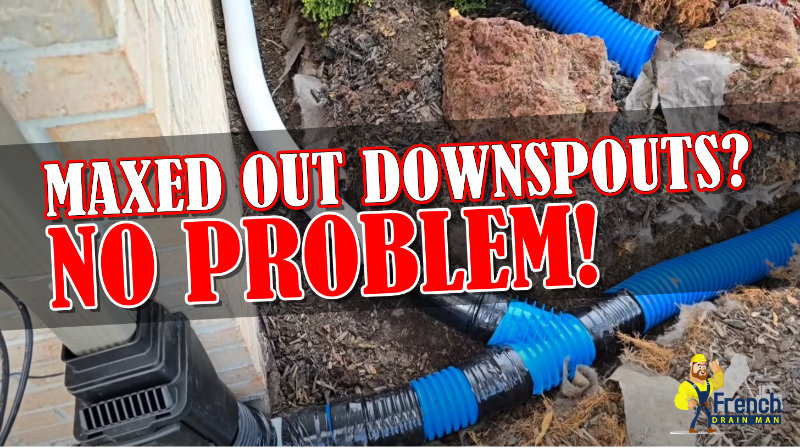How and When to Vent Your Underground Downspout System

FDM replaced this Vented Wye Clean Out with the New and Improved Downspout Leaf Filter and Clean Out
We are yard drainage contractors in Michigan. We’re installing an underground drainage system. We’re burying downspouts. There’s a lot of tricks and tips and things you got to know when you lay out a system. I’m going to go over a couple right now. Hopefully, it helps out the DIY guy and if you’re looking for this service, give us a call. We can design a system for you.
When to Vent a Downspout- Homeowner Example
Due to budgetary restraints, a homeowner wanted to WYE two downspouts together. I wasn’t crazy about it because of the amount of sheet water he had coming off the roof. One downspout was already responsible for so much water.
During moderate rain you’re going to get away with this kind of stuff, but you need to use certain tricks. We made this work for the homeowner by venting the downspout at the house.
So when this downspout fills up during an extreme downpour (and they do and they will) it no longer can vent. It’s going to be just full of water. So we want to move this water as fast as we possibly can. By venting the downspout, you’re going to pick up a lot more speed. Velocity is key here. Downspouts are a gravity-powered system. When the water falls off the roof down into this underground drainage system, you don’t want to lose the velocity that you have picked up. You don’t want to lose it to a poorly vented system.
3 Ways to Vent Your Underground Downspouts
For your buried downspouts to work at maximum efficiency, it’s imperative that you can access that line. Whether it’s with a camera, heat cable, or a garden hose, you never know what you may need to access that line for.
We have 3 ways to vent our buried downspouts to ensure they work, no matter the weather conditions. This keeps your roof runoff system flowing even if there is some act of God, like a sheet of ice covering a vent in harsh winter weather conditions.
1. Pop Up Emitter with Turf Restrictor Plate
First, we have a pop up emitter with a turf restrictor plate. The turf restrictor plate prevents the grass from growing over the plate and covering the discharge area. You want to ensure you can get the water out of your underground downspout system. That way, you don’t end up with a flooded basement.
2. Inline Catch Basin
Next, we have an inline catch basin for shingle gravel, and we also vent that. That way, if something should happen downstream and the pop up doesn’t work, like it’s frozen in the winter, you can still get the water off the roof.
3. Vented Cleanout with Removable Screen
Lastly, we have a vented cleanout with a removable screen up at the house. This third option protects your buried downspouts if a sheet of ice covers your other vents in the frigid winter months. In that case, when there’s a thaw, you’ll be able to get the water off the roof before it loads, bends, or pulls the gutter off the fascia board. There’s nothing more unsightly than that, and a vented screen can prevent those issues.
Not all vented cleanouts are equal, and that’s in part due to the screen size inside the vent. Our vented cleanout houses a very coarse screen – and it’s removable.

This coarse screen removes sticks, leaves, and other big organic materials. If your screen has a tight, fine mesh, you’ll have a biofilm of pollen, tree buds, and organic material. You’ll have to clean it all the time because it’s not going to flow water. Make sure to set up your vented cleanout as a low-maintenance option by choosing a vented cleanout with a course screen that allows debris to wash right through the system.
Get FDM’s Downspout Leaf Filter and Cleanout
For underground drainage systems and southeastern Michigan, north Macomb County, North Oakland County, give us a call at 248-505-3065.








